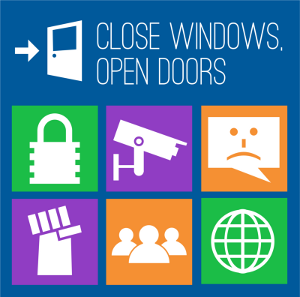Blog Archives
Great show from LAS Unplugged for the Holidays I am quite sure Fidel Chromecastro is the best show title in the world.
You can catch this show and all the amazing Jupiter Broadcasting shows at www.jupiterbroadcasting.com
-mikeyd
The Cinnamon Challenge : The Aftermath of a Year of Cinnamon Goodness
 I thought I’d weight in on my experiences so far with the Cinnamon desktop environment, which I came into contact with last year. While the project is coming along nicely, it does have it’s pro’s and cons. I wanted to go over what I have come across is using the environment over that past year. Read on for more.
I thought I’d weight in on my experiences so far with the Cinnamon desktop environment, which I came into contact with last year. While the project is coming along nicely, it does have it’s pro’s and cons. I wanted to go over what I have come across is using the environment over that past year. Read on for more.
Read the rest of this entry
App Day: Shutter
The software I want to show you today is Shutter. Now, if you did a quick google search for “Linux screenshot application,” I am sure* you will find it. But, for the uninformed, or those looking for some advice. Here it is: Shutter is easily the best screenshot application for Linux right now. Sure, the included screenshot applications in many distros is OK, but when you want features, you get* features. Let’s install the application first:
Debian/Ubuntu/Mint :
sudo add-apt-repository ppa:shutter/ppa sudo apt-get update && sudo apt-get install shutter
Fedora:
yum install shutter
Shutter, is an all purpose screenshot application. It outputs in serveral formats and is quite quick, with adjustable compression levels. This allows shutter to be versitile and quite flexible. There are other options available for keyboard shortcuts,as well as plugins and many upload services.
Hope you enjoy! Questions or comments after the break
30 Days of GNU/Linux: Day 3
Frustrated. That all there is to it. I could blame myself for diving back into Arch Linux so soon after being away from Linux this long. But since I still know my way around the file system, and the excellent Arch Linux beginners guide, I figured what the hell. I was a bit off on that one..
Turns out I had 0 problem install the system. What’s the problem then you ask? Mother-freaking-xorg. If that was a real Xorg config file, I would chuckle…a little. Vesa, nouveau, Nvidia, no driver would seem to work. Often I would get screen mismatches on -configure builds of Xorg, no screens found, or a failed Nvidia kernel load. Yay! After a long night of Mountain Dew and Pizza, I finally left my fate to the bbs Arch Linux boards. If I can’t solve this soon, I may just jump back to a Debian distro. Grrr!
I didn’t get around to install Linux Mint on the HTPC pc yet, due to said frustrations with Arch Linux (which I had 0 issues installing back in 2006/07… go figure). I Mint is an EXCELLENT distro for the media focused home user, and I definitely recommend it.
On a lighter note, I successfully triple booted Mac OS X, Linux Mint, and Fedora 19 beta on my Macbook Pro, 7,1) Do not* use Fedora <18. It is a complete mess with UEFI (the ‘bootloader’ of a Macbook). Fedora 19 Beta works well enough, trust me. I can post details on this process, but in summary:
- Install Mac OS X (clean install is best)
- Run EVERY update for firmware updates
- Run Disk Utility and shrink your Mac OSx partition small enough for another OS, parition the drive, but do not go on to “install windows.”
- reboot and confirm partition
- Install rEFIt
- reboot twice after installation
- Confirm you can boot into the new bootloader
- Insert your Linux distro of choice and shutdown (rEFIt likes a good shutdown for good results, as restarting from* OS X, is more of a soft* reboot)
- Hold c and power on the Macbook
- Install the Linux distro, making sure you REMOVE the FAT32 partition that was created for windows and then installing the necessary partitions
So far so good. If I end up with Linux Mint, Fedora, Debian or what have you, on the home Desktop, so be it, at least the drivers are very stable in those.
To another day…
ProfessorKaos




